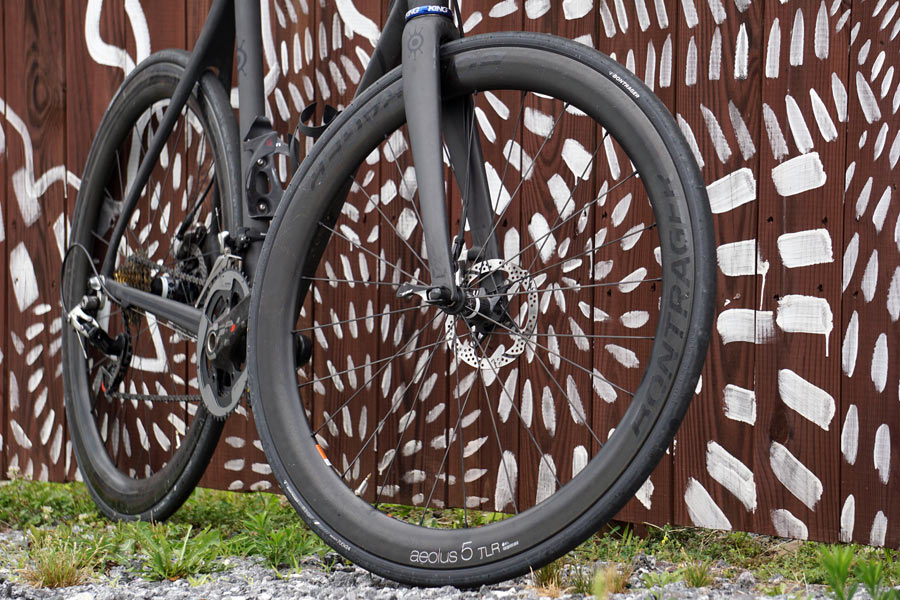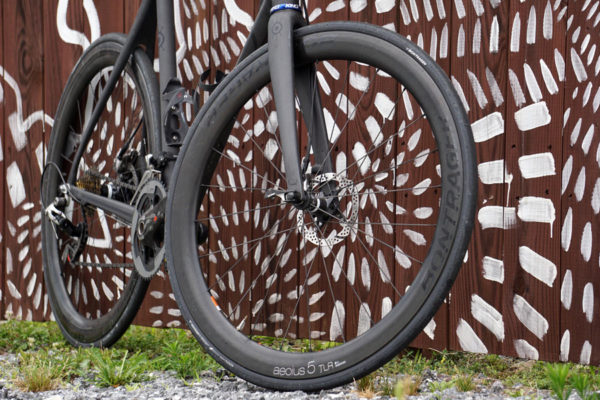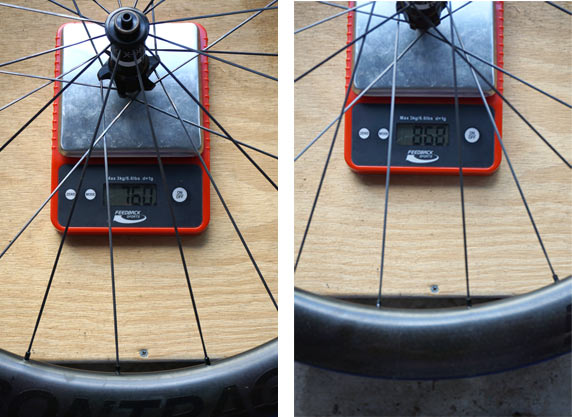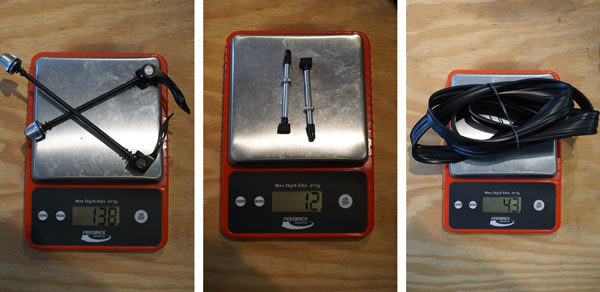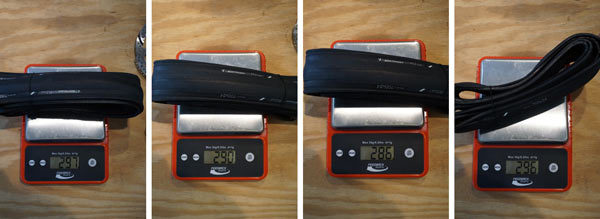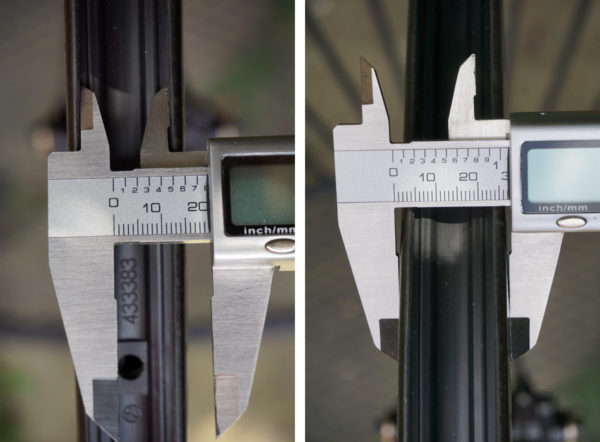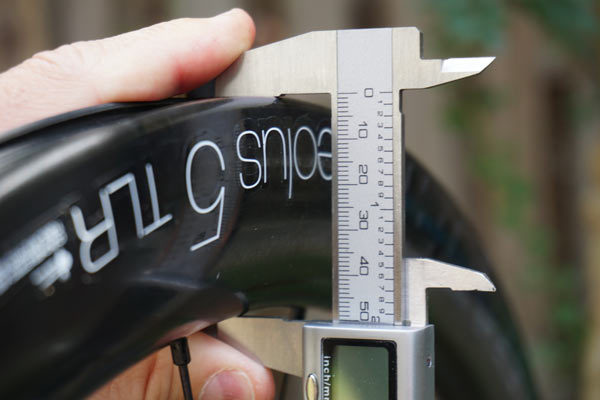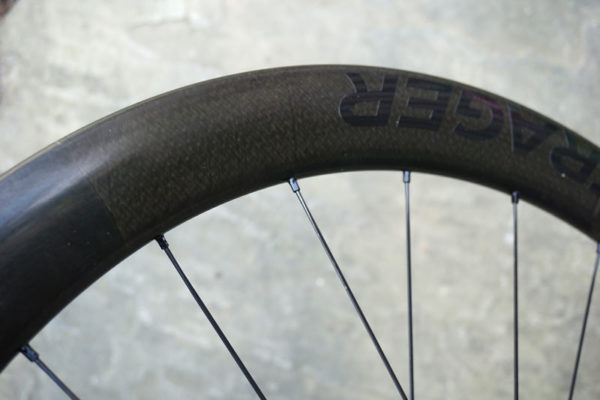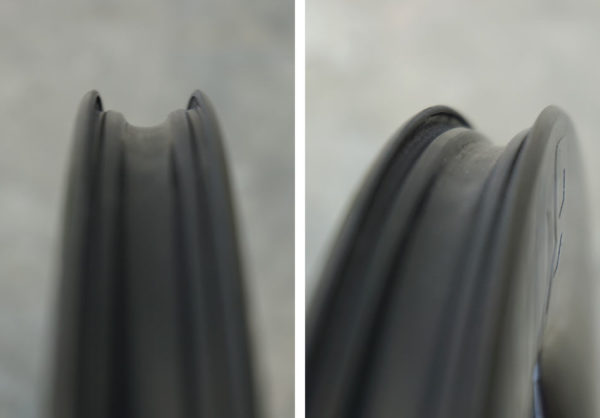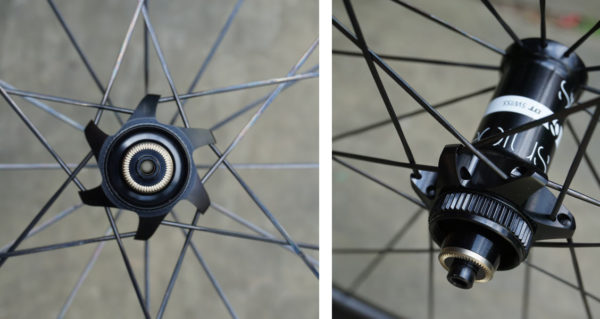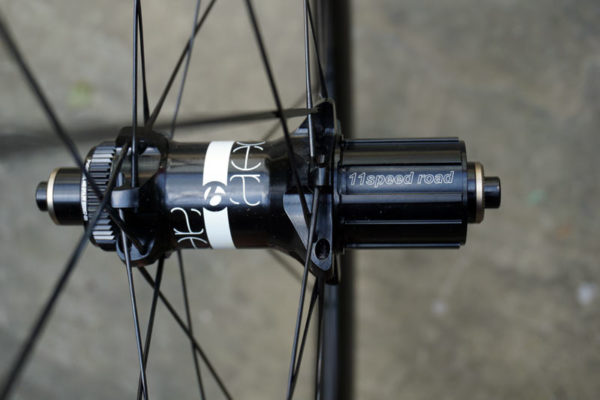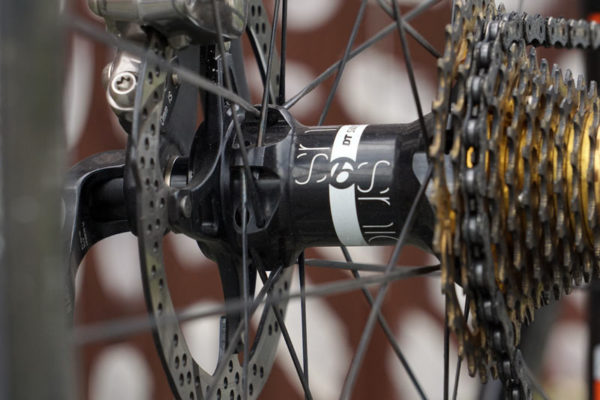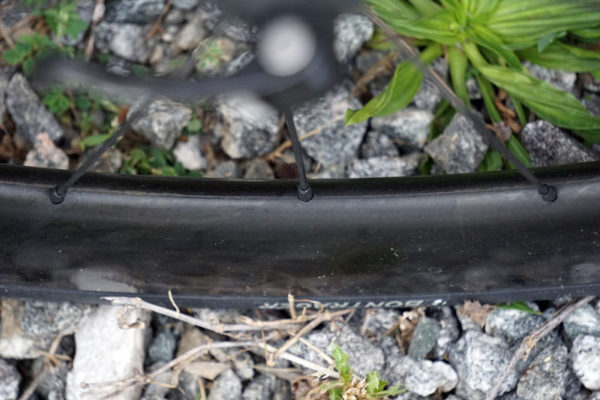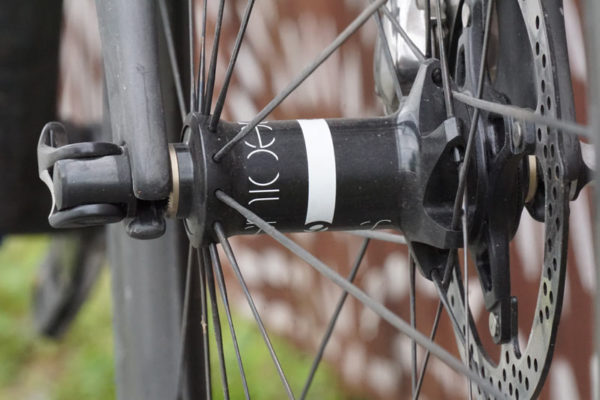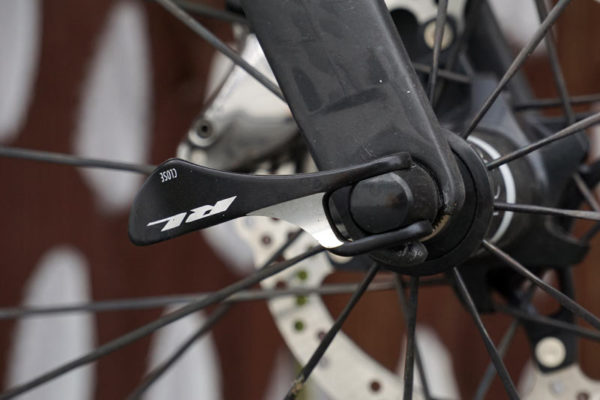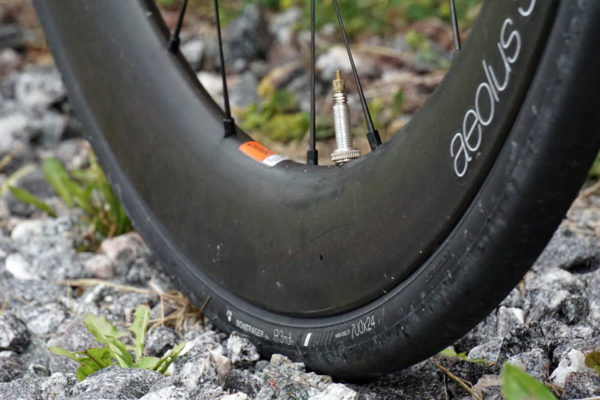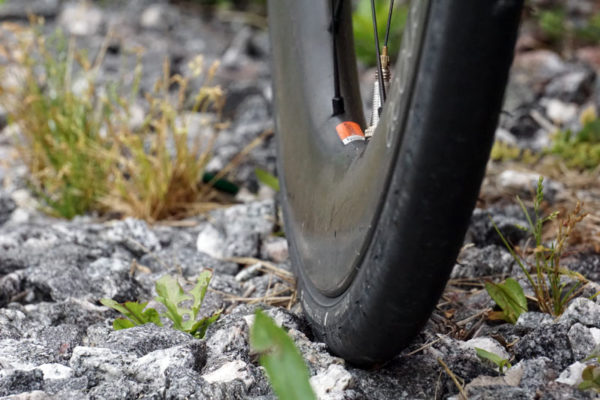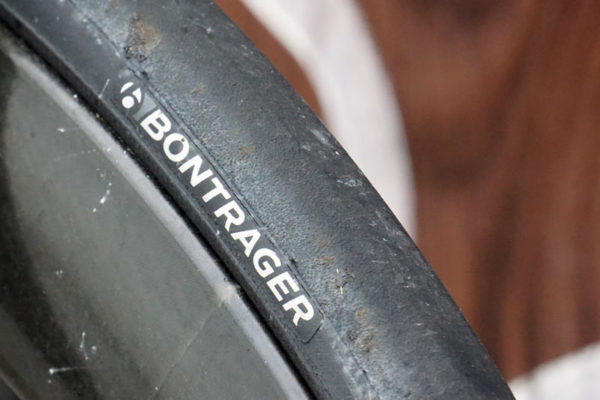Wasn’t too long ago that the terms “disc brake” and “aerodynamic” were mutually exclusive, but as things slowly proceed to put rotors in the pro peloton, the two concepts were bound to come together.
Bontrager is one brand that’s prepped and ready, even if all their top-level race bikes haven’t made the switch yet. I’ve been riding the Aeolus 5 TLR wheelset since last summer and they’ve proven fast, strong and able to handle some abuse. That last bit, plus their beginner-friendly setup, helps set them apart in a world where aero gains from brand to brand are so minuscule anymore…
TECH SPECS & ACTUAL WEIGHTS
The wheels come pre-installed with Bontrager’s TLR rim strip, which makes set up easy by raising the bead seat of the rim and helping shape the center channel so the tire can slide and pop into place. With the standard QR end caps, wheels came in at 760g front and 868g rear. Claimed weights, which are made without the rim strips installed, are 722g and 836g…which is about right considering the rim strip’s weight:
Included skewers are 138g, long tubeless valve stems are 12g, and the TLR rim strips are 43g. That’s not the lightest way to seal the rim bed, but they do replace tape by fitting tightly into place and being molded to match the rim’s internal shape.
Bontrager sent four of their R3 TLR 700×24 tires, which weighed in at 297g, 290g, 286g and 296g.
Inside width came in at almost 20mm (19.5mm claimed) and external width hit the mark at exactly 27mm (matches claim).
One nice feature is that their number scheme for the wheel names matches up with even 10mm increments. So, a “5” is 50, the “9” is 90, etc. They have Aeolus 3/5/7/9 options, and front and rear are sold separately if you’d like to mix and match.
The revised Aeolus wheels were introduced in early 2015 as a lighter, wider and overall better version of the prior model. Manufacturing of the OCLV carbon rims was brought in house, which gave them better control over the layup and design, so they were able to pull weight out of the body of the rim while still increasing the tire well and bead section thickness. The result was a stronger wheel that came in about 110g lighter than before, depending on size.
The TLR strip shapes the inside of the rim to make tire installation and tubeless set up easy. It also provides a nice little seat for the tire bead to lock into. Bontrager strongly recommends their use for the best experience, but even they admit the strips do add more weight than tape…and that you could use tubeless rim tape if you’re comfortable setting up tubeless tires. It may not be quite as easy, but it works and is safe. For our test, I used the TLR strips as intended, but will switch to tape for testing their cyclocross tires later this year.
The wheels are compatible with standard QR (tested) and 15mm front / 12×142 rear thru axles thanks to tool-free swappable end caps. The hubs use the Centerlock disc brake rotor interface, which keeps them lighter, but limits rotor selection unless you use adapters. I ran them with the newish TRP rotors paired to SRAM Red Hydro brakes…more on that combo in a separate review.
Both hubs spin on sealed cartridge bearings, two up front and four in the rear (two in the hub shell, two in the freehub body). Forward propulsion is courtesy of the DT Swiss 36-tooth Star Ratchet system. It’s only offered with a Shimano/SRAM 11-speed freehub body, no Campy option.
Available upgrades include ceramic bearings and their exclusive 54-tooth ratchet rings, the latter offering quick engagement and a little more noise.
Bladed spokes further improve aerodynamics, and a “stacked” offset spoke hole drilling at the hub helps create a stiffer wheel.
The skewers are a little chunky, but they are incredibly easy to use and hold tight. There’s plenty of leverage on them, with a nice wide thumb pad for pushing them closed. I didn’t have any issues with them coming loose. You know, if you’re still running quick release skewers on a disc brake bike.
Now, about the aerodynamics. That is, after all, why we’d get 50mm or deeper rims. Sure, they look good, but the aerodynamics need to offset the added weight for them to make sense. And here, they seem to, and 50mm is typically the upper limit of an “everyday, all-purpose” aero wheelset. I mostly rode the wheels all through our local hills and rolling North Carolina terrain, but also give them a big tour around Keuka Lake in upstate New York last summer. That ride mixed long descents down the west side of the lake with a long, gradual climb up the east side. And it’s all punctuated by a few steep grunts, particularly on the bluff at the top. (It’s also beautiful, I highly recommend it if you’re in the area…plus a visit to Watkins Glen for the hike up and down the waterfalls!).
Bontrager’s D3 shape designs the rim to use the tire as part of the overall aerodynamic shape, proving optimal air flow on the leading and trail edges of the front half (tire leading) of the wheel and the rear (rim leading). Not just in a straight line, but also at common yaw angles. I found them to be predictable and fairly stable in crosswinds, and darn fast in a straight line. Which is to be expected these days…there are only so many ways to skin a cat, and Bontrager’s shapes do the job. If you wanna dive deeper, check out their white paper here (PDF).
So they’re fast and can scoot up a hill well enough, so what makes them special? In my opinion, it’s their toughness. I like to venture off road now and then, even on a normal road bike. Sometimes that involves a little gravel, sometimes a lotta potholes. With things flinging into the rims. And in New York, I veered onto a road under construction and rode a long stretch of gravel over fresh blacktop, which made for a very hot, kinda weird surface texture that also flung a lot of stuff against the rims and the bike. Some of which stuck to it, which you can see in the pic above. Through all the jostling and more than a year of riding, the rims are (almost) scratch free and perfectly true. If you’re hard on wheels, these are worth a look.
The tires are also tough…I finished the review on the same set I started with. None of the rocks inflicted any visible (let along worrisome) cuts, nicks or scrapes. They use Bontrager’s Hard Case Lite inner puncture protection under the center of the tread. I never flatted, and air retention over time is respectable. The tires use a butyl inner lining, and I tested it with the provided Bontrager sealant. Grip is also good, as is comfort. I weigh in about 190-192 pounds dressed for road and ran about 90psi. At that level, they felt both efficient and comfortable. I ran as low as 85psi a couple times, but preferred the slightly firmer feel of 90.
As a package, Bontrager’s tubeless ready wheels offer an easy to use, durable and fast setup. Newbies will appreciate the quick tubeless install, and “pros” will like that they can make them even lighter by just using standard tubeless rim tape. And, should you prefer to run a stealth build (or just don’t want Bontrager branding on your non-Trek bicycle), the logo decals are easily removable.
Retail for the Aeolus family of wheels ranges from $2,850 to $3,000 $2,400 to $2,600 for the pair (UPDATE: price drop as of Nov 10, 2016), depending on depth. As tested, the Aeolus 5 TLR Disc sells for $1,275 front and $1,575 rear (check Bontrager’s website for latest single wheel pricing). The R3 TLR tires run $90 and come in 24mm and 26mm widths.
